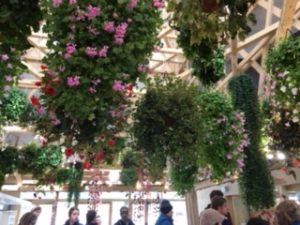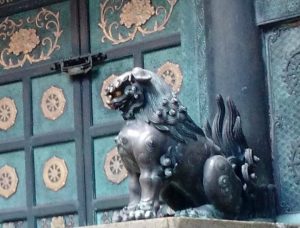When you are not near a crisis, it is easy to hear about it on the news, declare to yourself how sad it is, and then dismiss it from your mind. This is how Fukushima was for me for years. I remember hearing about it when it happened, but I must admit that in the past several years it has rarely crossed my mind. Though it was easy for me to move on from, visiting Fukushima yesterday showed how the people and environment of Japan that were affected have been struggling to regain normalcy this whole time. We visited a village called Iitate, and on the drive there we saw far too many plastic bags full of contaminated soil piled up in such a way that it is almost like a permanent structure. The town felt somewhat empty, so I was surprised to hear that this was an improvement.
Despite the extended struggle of these people, there were many signs of hope. Though we stopped in the community center only to wait for a brief period of time, this stop impacted me greatly. The center had been recently constructed, and was full of color, plants, and symbols of growth. One common reoccurrence was the image of a rice fairy, which though cartoonish was a very real metaphor for Fukushima. The fairy is in early stages of growth, but is green and flourishing. Fukushima in the same way strives for growth and restoration of the natural environment which had been irradiated, and seems to be on its way there.
Out of the destruction of the triple disaster came new ideas for energy, as well. We visited a small power company that has started to put solar panels in abandoned farm fields, and learned about their goals on small and large scales in terms of changing the tide of energy in Japan. In ways like solar, one could say that following March 2011, Fukushima has been a model for environmental solutions. On the community level, attitudes have changed and become more hopeful of a different future. On the government level, though, there is still progress to be made and Japan may not be a model. There is a policy protecting farm land in Japan which at first glance might seem like a good, protective measure, but actually makes what solar companies are doing more difficult. The policy discourages anything other than farming on farm land, and even though the fields solar is put in are abandoned, the government looks down on this use. The government has also not considered shifting away from nuclear power, which Japanese citizens are understandably uncertain of. As described in an essay called Japanese Literature and Environmental Crises by Karen Thornber, nuclear disasters in the past, such as the bombing of Hiroshima, left citizens hopeless and hesitant, generating a “nuclear allergy”. Given this past, current events, and alternatives, one would hope that one day the government in Japan would begin to support a different energy source that considers the environment and citizens affected by disasters like these.

Piles of contaminated soil from the village Iitate. There are 2.3 million bags in piles all around the village

Hanging plants in the new community center in Iitate

